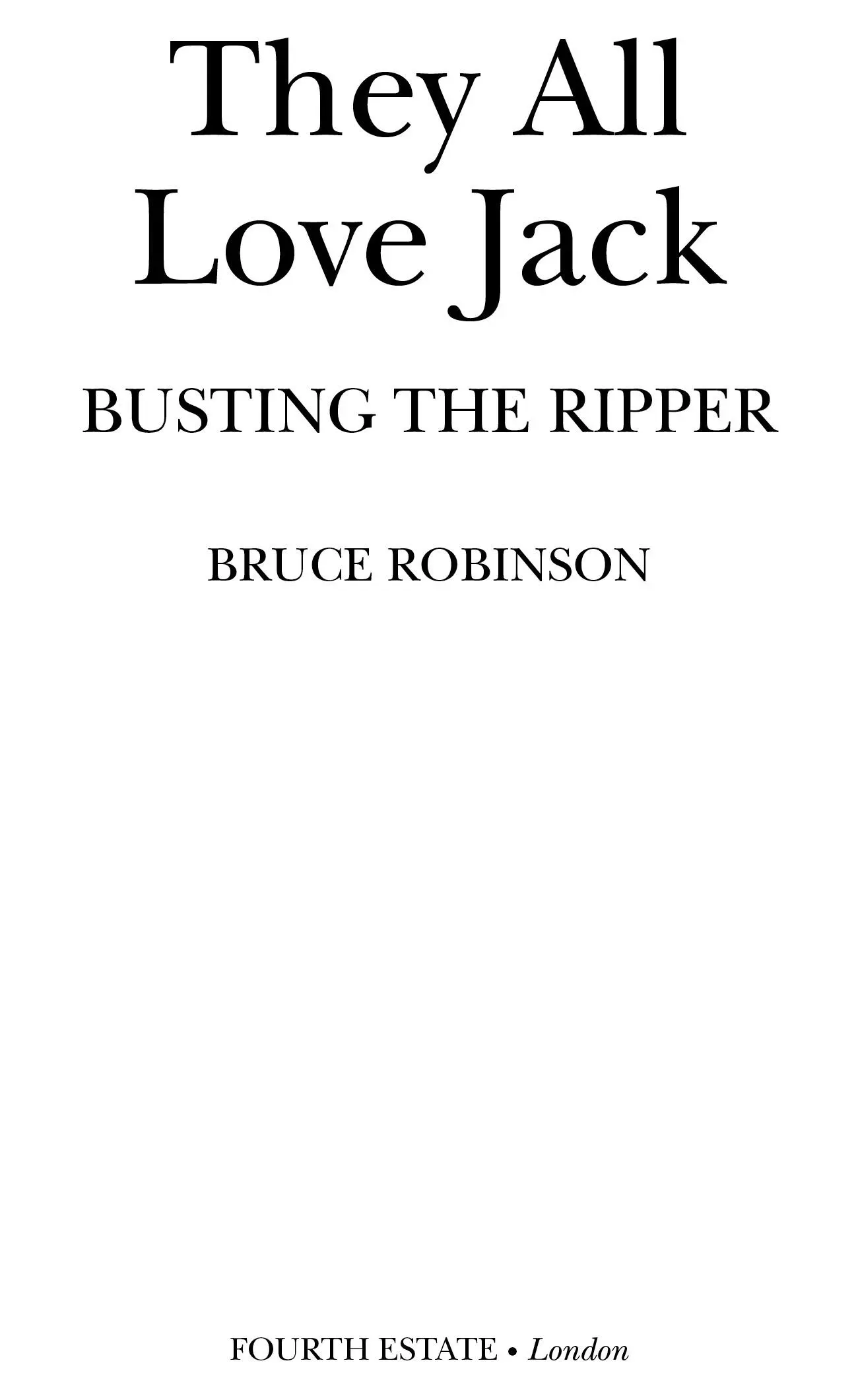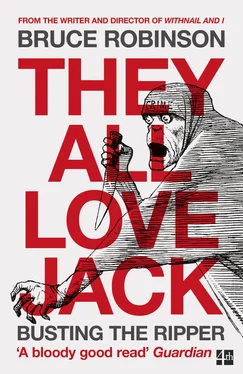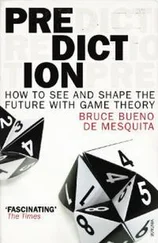
First published in Great Britain in 2015 by
Fourth Estate
An imprint of HarperCollins Publishers
1 London Bridge Street
London SE1 9GF
www.4thestate.co.uk
Copyright © Punditbest Ltd 2015
The right of Bruce Robinson to be identified as the author
of this work has been asserted by him in accordance
with the Copyright, Design and Patents Act 1988
A catalogue record for this book is
available from the British Library
Cover image © Getty Images
All rights reserved under International and Pan-American Copyright Conventions. By payment of the required fees, you have been granted the non-exclusive, non-transferable right to access and read the text of this e-book on-screen. No part of this text may be reproduced, transmitted, down-loaded, decompiled, reverse engineered, or stored in or introduced into any information storage and retrieval system, in any form or by any means, whether electronic or mechanical, now known or hereinafter invented, without the express written permission of HarperCollins.
Source ISBN: 9780007548873
Ebook Edition © October 2015 ISBN: 9780007548897
Version: 2016-07-08
In memory of Sergeant T. J. Hageboeck
of the Los Angeles Police
Power, like a desolating pestilence,
Pollutes whate’er it touches, and obedience,
Bane of all genius, virtue, freedom, truth,
Makes slaves of men, and, of the human frame
A mechanised automaton.
Shelley, 1813
Cover
Title Page
Copyright
Dedication
Epigraph
Author’s Note
1 All the Widow’s Men
2 A Conspiracy of Bafflement
3 The Mystic Tie
4 The Funny Little Game
5 The Savages
6 On the Square
7 The Ink-Stained Hack
8 The Double Event: Part Two
9 Rotten to the Core
10 ‘They All Love Jack’
11 On Her Majesty’s Service
12 The Mouth of the Maggot
13 A Gentleman’s Lair
14 ‘Orpheus’
15 ‘The Ezekiel Hit’
16 ‘Red Tape’
17 ‘The Spirit of Evil’
18 ‘The Maybrick Mystery’
19 Victorian Values
Appendix I: The Parnell Frame-Up
Appendix II: A Very Curious Letter
Acknowledgements
Sources
Picture Credits
Index
Also by Bruce Robinson
About the Publisher
There is an aphorism. When you see a giant, make sure it isn’t a dwarf standing in a favourable light. Thus we approach ‘the mystery of Jack the Ripper’.
He’s in a house of smoke and shifting mirrors. There are glimpses of amorphous faces. Many Jack the Rippers are in here, feeding off what historical fragments their keeper can throw into the pit.
Middle-aged men with disturbing expressions lean over the safety rail, clutching files. These are the Ripperologists. They are waiting for the Rippers to come out.
‘There he is!’ bellows one. ‘It’s the wall-eyed onanist from Zadonsk! Look at him, he’s playing with himself! Can’t you see him? He’s got a satchel of wombs!’
Nobody can see him. Attention migrates to another man, and he’s just seen somebody else. ‘There, there ,’ he barks, shuffling his Metropolitan Police files. ‘The Jew! The Jew!! Mark the Jew!! ’
An inflamed, bespectacled authority fights his way to the front. ‘Shut this farce down!’ he demands. ‘You are all duped!’ He struggles to get a pedometer past a pack of egg sandwiches. ‘I’ve measured his routes,’ he charges, thrusting his instrument as proof. ‘I challenge you all with the routes !’
Insults begin to fly, and argument breaks out between him and a man with a compass. But the lights have already started to dim, and the shutters have gone up. It’s time for the Ripperologists to go home and save their arguments for another day.
This book has no interest in the house of mirrors, and despite selective admiration for some, no interest in Ripperologists. I don’t believe this collective could catch the object of its aspiration in a thousand years, and furthermore, I don’t believe in ‘the mystery of Jack the Ripper’ either.
We all know the story, at least the blurb on the paperbacks.
It is the autumn of 1888. The cobbled streets of Whitechapel echo to the chilling footsteps of a ruthless killer … Out of the foetid darkness came this subhuman nemesis of blood-hungry evil. Taunting the frantic police, he visited merciless death on five desperate women, nothing to speak as his witness but their hideously mutilated remains. He left no clue, but went as silently as he came, leaving nothing but a name that will forever be etched into the annals of criminal infamy: ‘Jack the Ripper’. Ah! Jack the Ripper. (Fog to taste.)
This book is a repudiation of virtually everything Ripperology has ever written. Anyone who wishes is welcome to have their Ripper back, and retire with him to the nearest gaslit alley. I tend towards a cynical point of view. In politics I expect the worst, and usually get it. But I had no idea of what I was in for with this. Buried in the ‘mystery’ of the Ripper atrocities is a scandal that ain’t much short of incredible. Exploring it was like pulling at a small, wizened root that as it disinters is discovered to be connected to an enormous root-system, deeper and more protectively concealed than I could ever have imagined.
I’ve spent rather a while enquiring into this ‘mystery’, and incrementally I have learned to loathe much of what was the Victorian governing class. Wealth was a deity in Victorian England, and everything was subservient to the maintenance of it. Underpinned by their ‘right to rule’, their cupidity and institutionalised hypocrisy, these defects constituted a potent amalgamation of the forces that conspired to turn this monster into a ‘mystery’.
There’s a perverse, almost heroic status that has evolved around this prick, as though he were someone special, rather than the epitome of all that is cruel, and a God-damned repugnance. His only claim to the extraordinary is his anonymity, his so-called ‘mystery’; and even that doesn’t belong to him, but was the gift of others.
There’s a hybrid of Ripperology responsible for a dizzying variety of publications over the last half-century. By a process of attrition and endless industry, this coterie of authors has come to ‘own’ this history. They are self-appointed ‘experts’ and guardians of flat-earth thinking. Under constrictions of the herd (and by some by design) they have constructed a formidable camouflage around this criminal. It is necessary to break through it before there is any possibility of discovering the identity of our Victorian psychopath.
Busting Jack entails an unravelling of the root-system that is way beyond the constipated strictures of Ripperology.
During the Second World War there was an interrogator for Army Counter-Intelligence by the name of Lieutenant Colonel Oreste Pinto. It was his task to break the cover of enemy spies, and he’s one of my weirder heroes. In 1942 Pinto had a man at the other side of his desk who instinct told him had to be an enemy agent. Before arriving at the Colonel’s office (just off The Strand in central London), this suspect had been through many searing investigations and survived them all. Notwithstanding that, the authorities continued to harbour suspicions; but nobody could break him. So what did Pinto think?
Читать дальше












